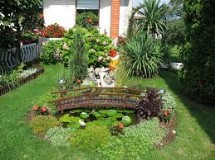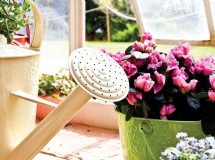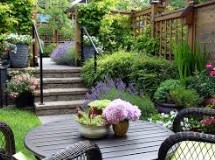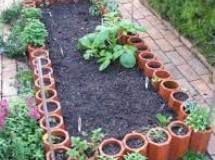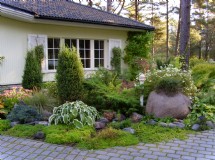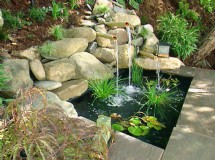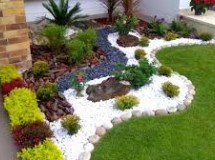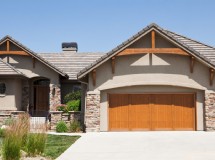- 1). Mark the area for the planting bed. Use powdered chalk to mark a square or rectangular bed that measures no more than 4 feet wide, because the center of a bed this width is easy to access from either side. Keep the length 10 feet or less if using landscape timbers, since longer lengths are heavy and difficult to carry to the site. Pay attention to the sunlight requirements of your desired plants and their mature size so you choose the most suitable site.
- 2). Remove any stones, rocks or building material from within the outline and discard. Pull out the vegetation within the outline using a gloved hand and gardening tool such as a hoe. Although labor intensive, removing undesired weeds manually ensures complete removal since you pull out the roots as well. Alternatively, spray the vegetation with boiling water or vinegar containing 20 percent acetic acid to kill them organically. Rake dead or dying plants after three days, or repeat application over stubborn plants.
- 3). Dig a 4- to 6-inch deep trench along the chalk mark, as wide as the edging material you plant to use to outline the bed. Level the base of the trench and spread 1 inch of gravel.
- 4). Lay lengths of landscape timbers, 2-by-8-inch lumber, railroad ties or concrete blocks over the gravel. Drill a pilot hole through the corners and middle of each timber or railroad tie and insert 10- to 12-inch metal spike through the holes to keep the edging in place. Installing the edging before preparing the soil contains it and prevents it from spreading outside the planting bed.
- 5). Loosen the soil in the planting bed to a depth of 6 to 10 inches to aerate it and break compacted mounds.This improves soil texture, increases oxygen in the soil and supports plant growth.
- 6). Move soil to a depth of 5 to 6 inches from one corner of the bed to the other and add 2 to 3 inches of organic compost or well-rotted manure to it. Return the soil from the other corner and mix. Called double digging, this process makes use of the deep-rooting potential the bed offers and improves the rooting zone for plants. Repeat the process at the other corner and rake well to level the surface of your planting bed.
SHARE


